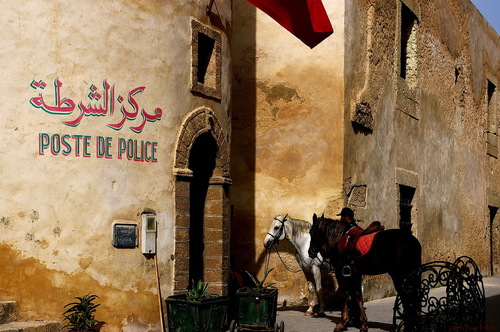The Portuguese City of Mazagan (El Jadida), one of the first settlements created in Africa by Portuguese explorers on the route to India, bears outstanding witness to the exchange of influences between European and Moroccan cultures from the 16th to the 18th centuries, which are evident in the architecture, technology and town planning. Mazagan was built as a fortified colony on the Atlantic coast at the beginning of the 16th century. Located 90 km south of Casablanca, it dominates a natural bay of great beauty. The brothers Francisco and Diogo de Arruda built the first citadel in 1514. In 1541- 1548, in accordance with the plans of the Italian architect Benedetto da Ravenna, Joao Ribeiro and Juan Castillo enlarged the citadel transforming it into a star-shaped fortification.
The Mazagan fortress with its ditch and inclined ramparts is one of the first testimonies in the Lusitanian period of the application by Portuguese technology of new architectural concepts of Renaissance adapted to the advent of the firearm. Complete and unique witness in Morocco to the advent of this new style, Mazagan is better preserved than other Portuguese fortifications in Morocco; most of the other Portuguese trading posts in the world having suffered many changes.
Following the departure of the Portuguese in 1769 and the resulting abandon of the city, the fortress was rehabilitated in the middle of the 19th century and named El Jadida (The New), and became a commercial centre and a multicultural society, embracing Muslims, Jews and Christians.
The shape and the layout of the fortress have been well preserved and represent an outstanding example of this category of construction. The historic fabric inside the fortress reflects the different changes and influences over the centuries. The existent monuments of the Portuguese period are: the ramparts and their bastions, the cistern, an outstanding example of this type of structure, and the Catholic Church of the Assumption, of late Gothic style, the Manoeline style at the beginning of the 16th century.






